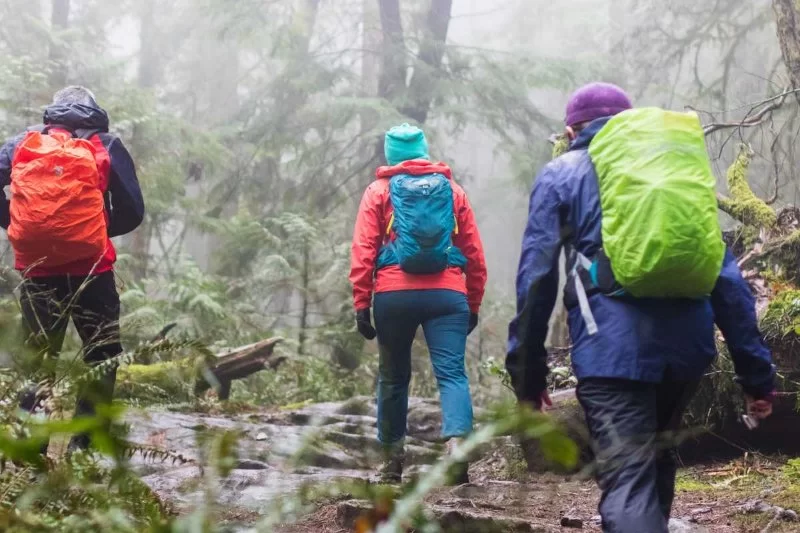- why-backpacking-in-the-rain-is-worth-it - Why Backpacking in the Rain Is Worth It
- how-to-prepare-for-rainy-backpacking-trips - How to Prepare for Rainy Backpacking Trips
- essential-rain-gear-you-shouldnt-forget - Essential Rain Gear You Shouldn’t Forget
- real-experience-lessons-from-the-trail - Real Experience: Lessons from the Trail
- explore-wet-weather-trails-with-pine-cliff-resort - Explore Wet-Weather Trails with Pine Cliff Resort
1. Why Backpacking in the Rain Is Worth It
For most hikers, rain can feel like the enemy—but seasoned backpackers know there’s something magical about exploring the wilderness in wet conditions. Mist-covered peaks, mossy trails, the rhythmic patter of drops on your tent... it’s nature at its most intimate. However, enjoying this beauty means coming prepared. That’s why understanding the essential gear for backpacking in rainy conditions isn’t just helpful—it’s critical.
2. How to Prepare for Rainy Backpacking Trips
Preparation starts before you even hit the trail. First, research your route’s typical weather patterns and trail conditions—apps like AllTrails or local ranger station updates can be lifesavers. Then, pack with flexibility in mind. Choose gear that dries fast, sheds water effectively, and holds up to wear.
Proper meal planning also becomes more important in the rain. Wet weather saps energy faster, and fires may not be an option—so bring high-calorie, ready-to-eat foods. Store them in waterproof containers or double-layered zip bags to prevent soggy disasters.
3. Essential Rain Gear You Shouldn’t Forget
Let’s break down the gear that can turn a miserable downpour into a memorable experience.
3.1 Waterproof Clothing That Actually Works
Not all rain jackets are made equal. Invest in a breathable, durable outer shell with taped seams. Look for adjustable hoods, ventilation zips, and storm flaps. Don’t forget waterproof pants—because cold, soaked legs will kill morale quickly.
3.2 Pack Covers and Dry Bags
Even if your backpack claims to be water-resistant, use a high-quality rain cover. Inside your pack, line everything with dry bags or even trash compactor bags. Compartmentalize clothes, food, and electronics so even if water sneaks in, it doesn’t ruin your entire trip.
3.3 Shelter That Handles a Downpour
Your tent should be designed for wet weather. Double-wall construction, strong guy lines, and a waterproof floor are musts. Tarps are a backpacker’s best friend in the rain—use them to create a dry cooking space or reinforce your tent.
3.4 Footwear and Gaiters
Gore-Tex boots or waterproof trail runners paired with gaiters help keep water and mud out. Bring extra socks (merino wool preferred) and rotate them often. Nothing ruins a trip like trench foot or painful blisters.
4. Real Experience: Lessons from the Trail
“I once hiked through Pisgah National Forest in a steady drizzle for three days straight,” said Lindsay Tran, an outdoor educator from Asheville. “The only reason I didn’t bail was because I’d packed correctly. My dry bags were my lifeline, and my tarp turned a wet hell into a cozy little camp.”
In contrast, Brian from New York shared a cautionary tale. “I underestimated a fall rainstorm in the Catskills. No tent fly, soaked sleeping bag, and no dry clothes. I had to turn back after just one night. Learned my lesson: never skip the basics.”
5. Explore Wet-Weather Trails with Pine Cliff Resort
If you’re planning to hike and camp in rainy regions, make sure you’re geared up properly. At Pine Cliff Resort, you’ll find not only gear recommendations but trail-tested advice and community insight to help you adventure confidently in any weather.
Rain doesn’t have to mean retreat. With the right essentials, it can mean a deeper connection to the land, quiet trails, and a completely new kind of backpacking joy.







